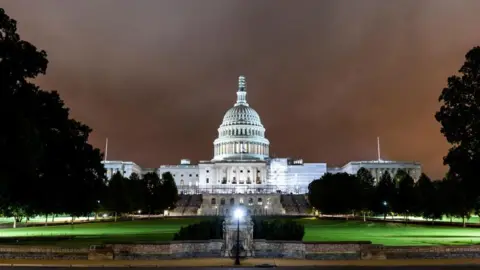Why government shutdowns seem to only happen in US
The US government has shut down ten times over the past 40-plus years. Meanwhile, in other countries, governments keep functioning, even in the midst of wars and constitutional crises. So why does this uniquely American phenomenon keep happening?
For most of the world, a government shutdown is very bad news – the result of revolution, invasion or disaster. But in the US, it has become a kind of bargaining tool for political leaders – and a perennial phenomenon.
So why does this keep happening?
America’s federal system of government allows different branches of government to be controlled by different parties. It was a structure devised by the nation’s founders to encourage compromise and deliberation, but lately it has had the opposite effect.
That’s because in 1980, the attorney general under President Jimmy Carter issued a narrow interpretation of the 1884 Anti-Deficiency Act. The 19th Century spending law banned the government from entering into contracts without congressional approval; for almost a century, if there was a gap in budgets, the government had allowed necessary spending to continue. But after 1980, the government took a much stricter view: no budget, no spending.
That interpretation has set the US apart from other non-parliamentary democracies, such as Brazil, where a strong executive branch has the ability to keep the lights on during a budget impasse.
The first US shutdown occurred shortly after in 1981, when President Ronald Reagan vetoed a funding bill, and lasted for a few days. Since then, there’s been at least ten others that led to a stop in services, lasting anywhere from half-a-day to over a month. The last one, from 21 December 2018 to 25 January 2019, was the longest on record.
While some essential services did continue to run, like Social Security and the military, hundreds of thousands of federal workers were not paid. At the time, the White House estimated that the shutdown reduced GDP growth by 0.1 percentage points for every week the salary stoppage went on.
Elsewhere in the world, such shutdowns are practically impossible. The parliamentary system used by most European democracies ensures that the executive and legislature are controlled by the same party or coalition. Conceivably, a parliament could refuse to pass a budget proposed by the prime minister, but such an action would likely trigger a new election – not a stoppage in services like national parks, tax refunds and food assistance programmes.
 EPA-EPE/Rex/Shutterstock
EPA-EPE/Rex/ShutterstockThat’s exactly what happened in Canada in 2011, when opposition parties rejected the budget proposed by then-Prime Minister Stephen Harper’s Conservative Party, which had a minority of seats in parliament. The House of Commons then passed a motion of no-confidence, triggering an election. Meanwhile, the government’s services ticked away.
Even in Belgium, which did not have an elected government in power for 589 days between 2010-2011, the trains kept running.
More recently, Ireland managed to keep everything running from 2016-2020 under a minority government with a confidence-and-supply system, which is when parties not in power agree to support spending bills and confidence votes.
But this type of cooperation has become increasingly rare in the US, where warring political parties seem all-too willing to use the day-to-day functioning of the government as a bargaining chip to extract demands from the other side.
Government funding has been extended at least three times since last autumn, when then-Republican Speaker Kevin McCarthy was ousted and eventually replaced with current Speaker Mike Johnson. So far, temporary spending bills have been passed through bipartisan support.
With President-elect Donald Trump and tech billionaire Elon Musk’s efforts to kill a short-term funding bill that would have funded the government through 14 March, the current budget will expire on Saturday at 12:01am local time. That means an eleventh government shutdown could be right around the corner.
Comments (0)